Situational and Symbolic Archetypes Situational Archetypes Situational archetypes

Situational and Symbolic Archetypes

Situational Archetypes Situational archetypes are situations that appear over and over in movies, literature, and stories of all kinds. Almost every story is based on a version of the archetypal hero’s quest and contains other situational and symbolic archetypes, as well.

Good vs. Evil A battle between primal forces Humans show eternal optimism in the continual portrayal of good triumphing over evil despite great odds.




The Ultimate Battle of Good vs. Evil

The Hero’s Quest The search for someone or something which, when found and brought back, will save the kingdom. The quest is described by a set of events the hero experiences.

The Hero’s Quest The Call - the hero gets a call to action The Herald - the person or event who delivers the call The Task - the thing the hero must accomplish on the quest The Crossing Over - the hero enters “wierdy world” The Tests - problems the hero must solve The Trials - things the hero must put up with The Ultimate Battle - the hero faces the enemy The Reemergence - now exiting “wierdy world” The Return Home - duh. The Gifts - the “payment” for completing the quest The Transformation - the hero is changed for the better






The Magic Weapon Every hero has a special skill or weapon only he can wield.




The Unhealable Wound Almost every hero has a weakness or wound inflicted or taken advantage of by his greatest enemy. The wound never goes away and often bothers the hero when his enemy is near.





The Fall This archetype describes a descent from a higher to a lower state of being. The experience involves defilement and/or a loss of innocence. Often, fallen characters are expelled from their society or paradise as a penalty for disobedience and moral transgression.





Natural vs. Mechanistic World Nature is good. Technology or society is evil.



Supernatural Intervention The gods intervene on behalf of the hero or sometimes against him.




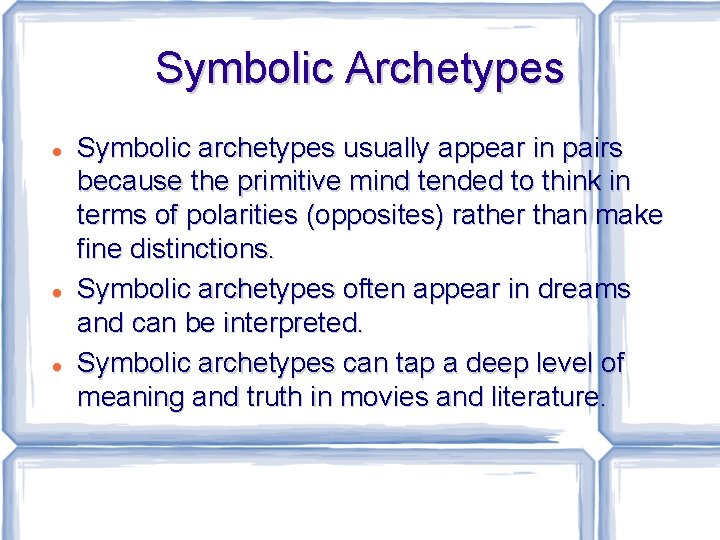
Symbolic Archetypes Symbolic archetypes usually appear in pairs because the primitive mind tended to think in terms of polarities (opposites) rather than make fine distinctions. Symbolic archetypes often appear in dreams and can be interpreted. Symbolic archetypes can tap a deep level of meaning and truth in movies and literature.

Light vs. Darkness Light suggests hope, renewal, goodness, or intellectual illumination. Darkness suggests the unknown, ignorance, evil, and despair.






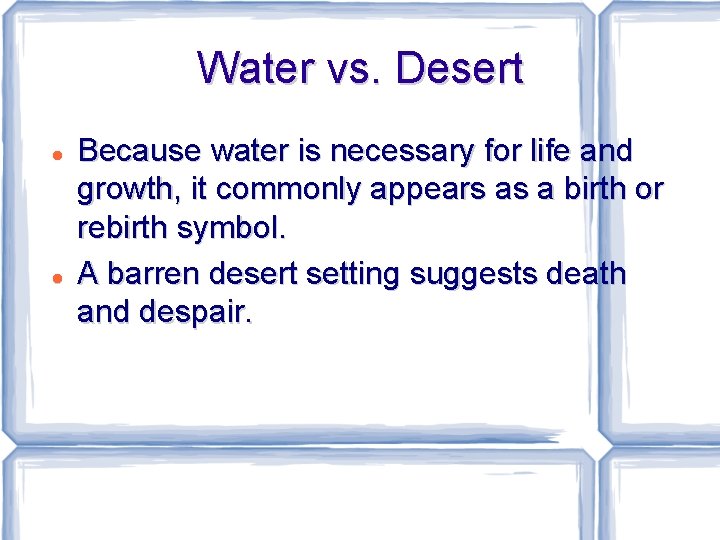
Water vs. Desert Because water is necessary for life and growth, it commonly appears as a birth or rebirth symbol. A barren desert setting suggests death and despair.


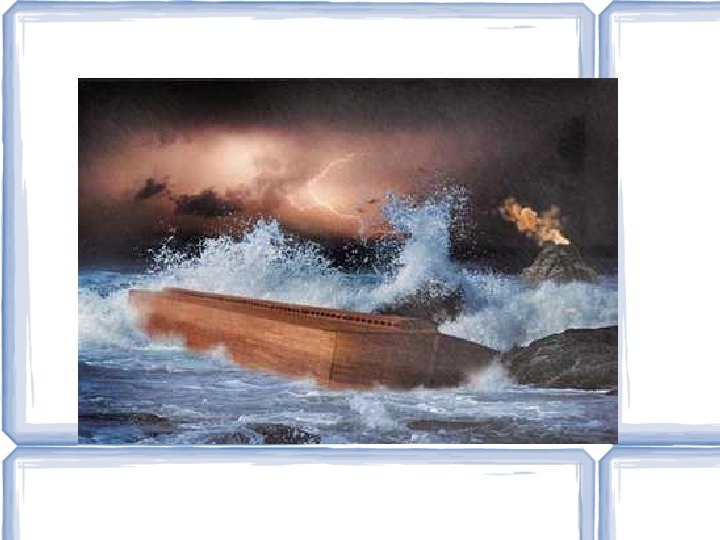


Fire vs. Ice Fire represents knowledge, light, life, and rebirth. Ice represents darkness, sterility, and death. ignorance,


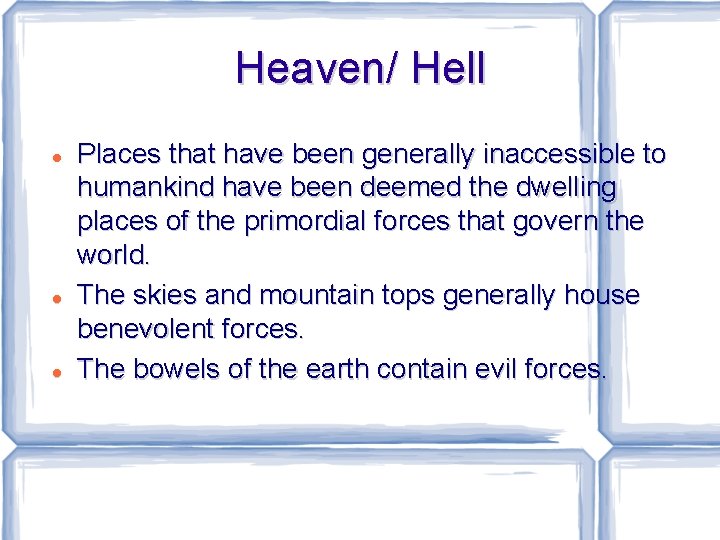
Heaven/ Hell Places that have been generally inaccessible to humankind have been deemed the dwelling places of the primordial forces that govern the world. The skies and mountain tops generally house benevolent forces. The bowels of the earth contain evil forces.
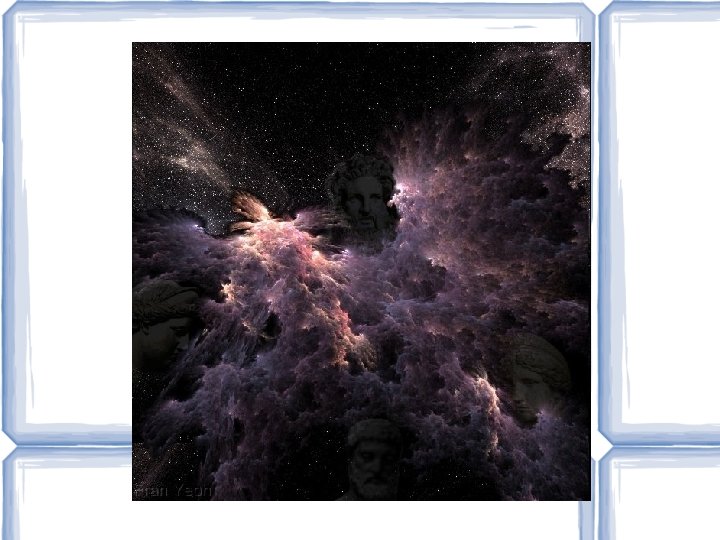

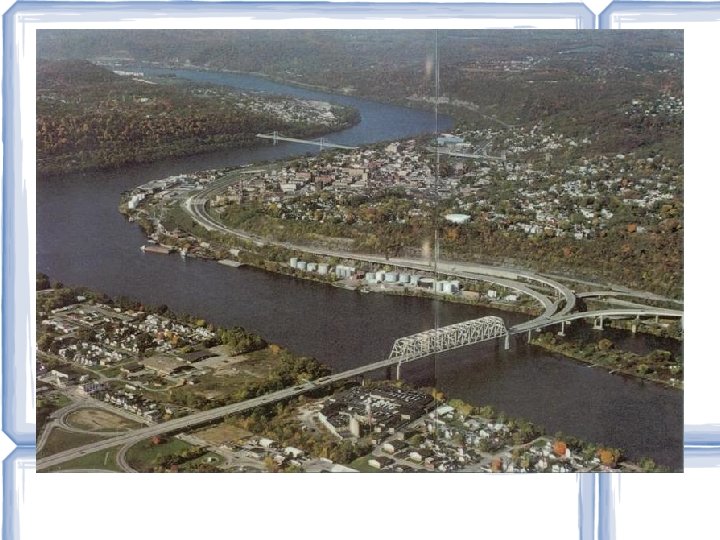
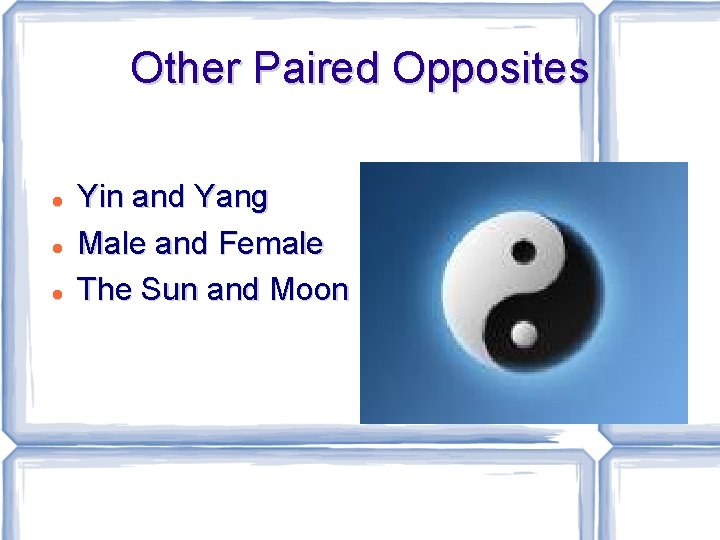
Other Paired Opposites Yin and Yang Male and Female The Sun and Moon



Colors can hold symbolic significance. White - innocence, purity (Death? ) Black - evil, death, the unknown Red - passion, anger, love Blue - peace, solace, sadness Green - growth Yellow - happiness









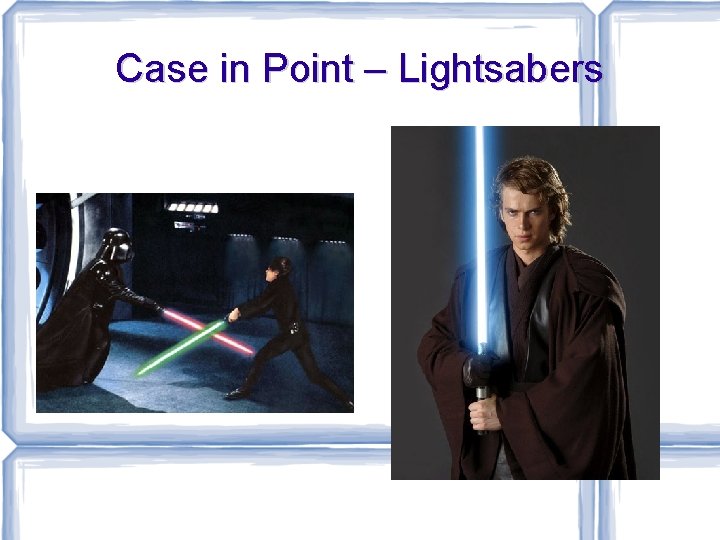
Case in Point – Lightsabers
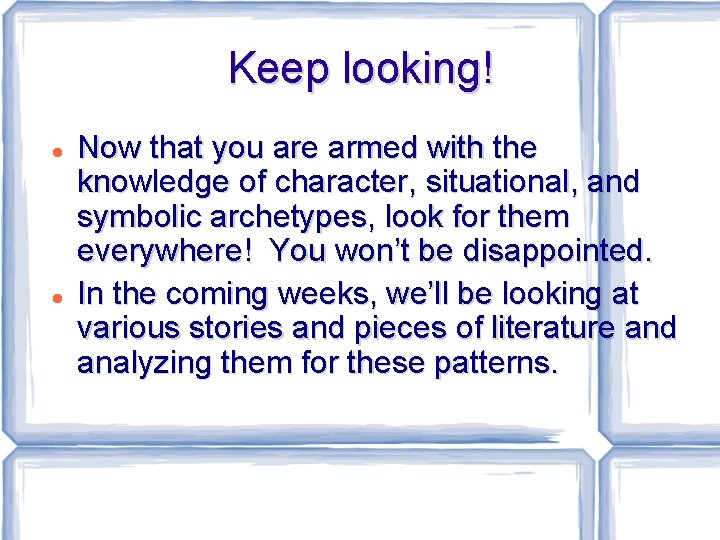
Keep looking! Now that you are armed with the knowledge of character, situational, and symbolic archetypes, look for them everywhere! You won’t be disappointed. In the coming weeks, we’ll be looking at various stories and pieces of literature and analyzing them for these patterns.
- Slides: 71